 The Chauchat (pronounced "show-shah", named after its main contributor Colonel Louis Chauchat), was the standardlight machine gun of the French Army during
The Chauchat (pronounced "show-shah", named after its main contributor Colonel Louis Chauchat), was the standardlight machine gun of the French Army during  World War I. Under the leadership of General Joseph Joffre,
World War I. Under the leadership of General Joseph Joffre,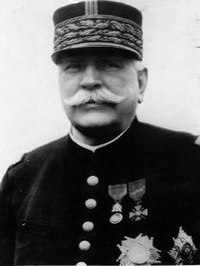 it was commissioned into the French Army in 1916. It was also widely used by the US Army in 1917-1918 and by six other nations: Belgium,
it was commissioned into the French Army in 1916. It was also widely used by the US Army in 1917-1918 and by six other nations: Belgium, Greece, Poland, Russia, Serbia and Germany (who used captured examples) during and after World War I. Its
Greece, Poland, Russia, Serbia and Germany (who used captured examples) during and after World War I. Its
Relatively small and lightweight, the Chauchat significantly increased the firepower of the infantry offensive. Over 262,000 were produced, making it the most widely-manufactured automatic weapon of World War I (1914–18). A variant chambered to the US .30-06 cartridge is known as the CSRG M1918. It was specifically designed for the American Expeditionary Forces (AEF), as a different weapon. However, the French 8mm Lebel caliber Chauchat
A variant chambered to the US .30-06 cartridge is known as the CSRG M1918. It was specifically designed for the American Expeditionary Forces (AEF), as a different weapon. However, the French 8mm Lebel caliber Chauchat  was the model which was extensively used by the AEF. It was described in official AEF instruction manuals as the "Automatic Rifle Model 1915 (Chauchat)".at the start of the ist world war there were units dressed like this but with white covers on the kepi and the kepi was crumpled, trousers were white.
was the model which was extensively used by the AEF. It was described in official AEF instruction manuals as the "Automatic Rifle Model 1915 (Chauchat)".at the start of the ist world war there were units dressed like this but with white covers on the kepi and the kepi was crumpled, trousers were white.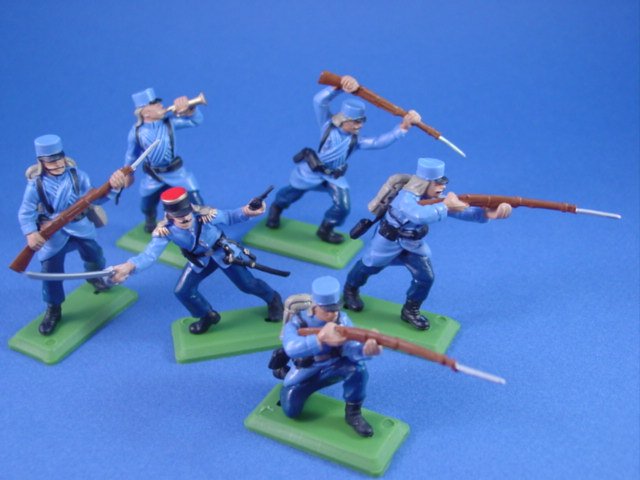

The Chauchat was one of the first light machine guns designed to be a mobile machine gun, carried and fired by a single operator and an assistant, without a heavy tripod or a team of gunners. It set a precedent for several  subsequent 20th century firearm projects, being a portable automatic weapon built inexpensively and in very large numbers. The Chauchat combined a pistol grip, an in-line stock, a large-capacity detachable magazine, and
subsequent 20th century firearm projects, being a portable automatic weapon built inexpensively and in very large numbers. The Chauchat combined a pistol grip, an in-line stock, a large-capacity detachable magazine, and 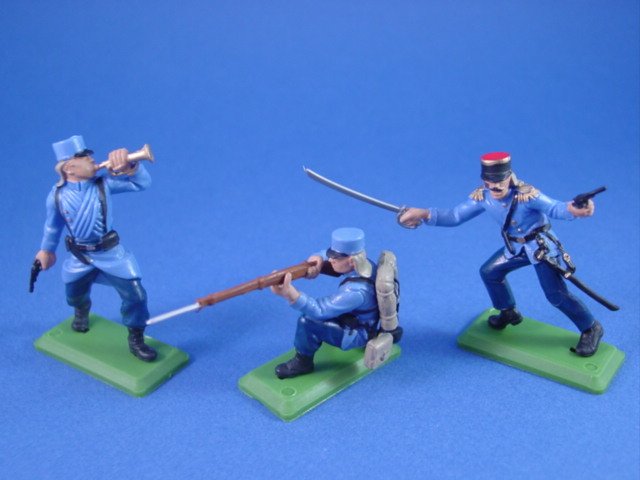 selective-fire capability in a compact package of manageable weight (20 pounds) for a single soldier. It could be fired from the hip and also while on the move.
selective-fire capability in a compact package of manageable weight (20 pounds) for a single soldier. It could be fired from the hip and also while on the move.
 selective-fire capability in a compact package of manageable weight (20 pounds) for a single soldier. It could be fired from the hip and also while on the move.
selective-fire capability in a compact package of manageable weight (20 pounds) for a single soldier. It could be fired from the hip and also while on the move.
In the muddy trenches of northern France, several operational problems came to light, caused by the economical construction which had been simplified to allow emergency mass production.

These problems allowed for the ingress of dirt and were the cause of 2/3 of all stoppages. After the World War I,  the French replaced the Chauchat as the standard light machine gun with the Mle 1924
the French replaced the Chauchat as the standard light machine gun with the Mle 1924 and later with the Mle 1924/29 light machine gun. The AEF in France eventually replaced it with the Browning Automatic Rifle,
and later with the Mle 1924/29 light machine gun. The AEF in France eventually replaced it with the Browning Automatic Rifle,
 the French replaced the Chauchat as the standard light machine gun with the Mle 1924
the French replaced the Chauchat as the standard light machine gun with the Mle 1924 and later with the Mle 1924/29 light machine gun. The AEF in France eventually replaced it with the Browning Automatic Rifle,
and later with the Mle 1924/29 light machine gun. The AEF in France eventually replaced it with the Browning Automatic Rifle,
which appeared on the front lines of northern France in September 1918, barely two months before the Armistice of November 11.
Over time the Chauchat's poor reputation in the trenches because of the mud, dirt, and humidity to which the  performance of the Mle1918 Chauchat, in US 30-06 caliber, a different model which had been specifically designed
performance of the Mle1918 Chauchat, in US 30-06 caliber, a different model which had been specifically designed semi-automatic rifle of 1906, not on the later designs (1910) of Rudolf Frommer, the Hungarian inventor of the
semi-automatic rifle of 1906, not on the later designs (1910) of Rudolf Frommer, the Hungarian inventor of the 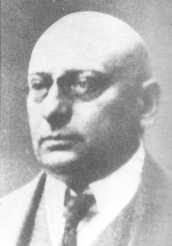 commercial Frommer Stop pistol,
commercial Frommer Stop pistol,  as often stated. It was developed at Atelier de Construction de Puteaux (APX) between 1903 and 1910 by a team composed of Colonel Louis Chauchat and the weapon designer
as often stated. It was developed at Atelier de Construction de Puteaux (APX) between 1903 and 1910 by a team composed of Colonel Louis Chauchat and the weapon designer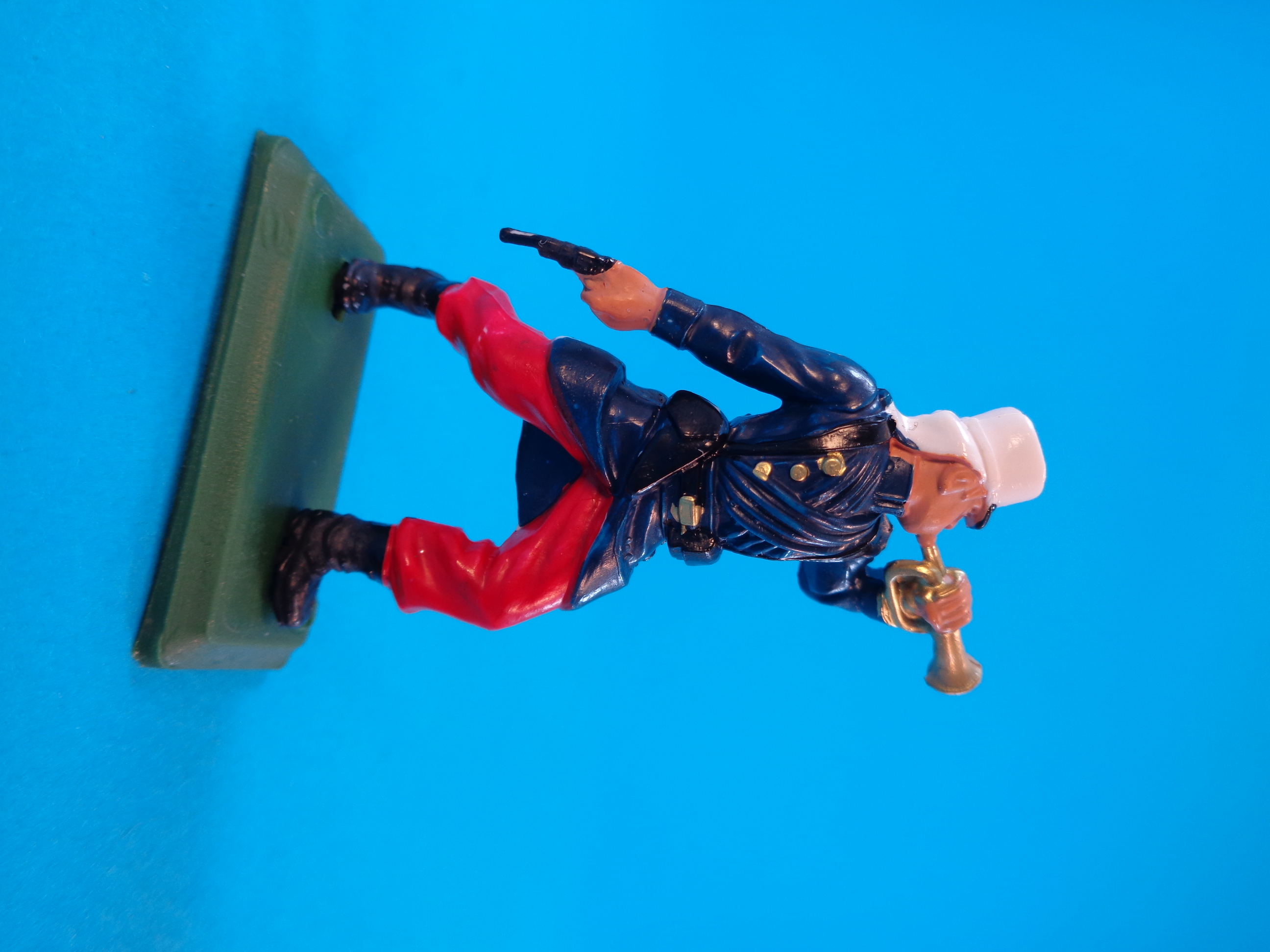 the Chauchat machine rifle after 1915. Not less than eight trial prototypes were tested at the Atelier de Construction de Puteaux (APX) between 1903 and 1909. Then a small series of 8mm Lebel "CS" (Chauchat-Sutter) machine rifles was adopted
the Chauchat machine rifle after 1915. Not less than eight trial prototypes were tested at the Atelier de Construction de Puteaux (APX) between 1903 and 1909. Then a small series of 8mm Lebel "CS" (Chauchat-Sutter) machine rifles was adopted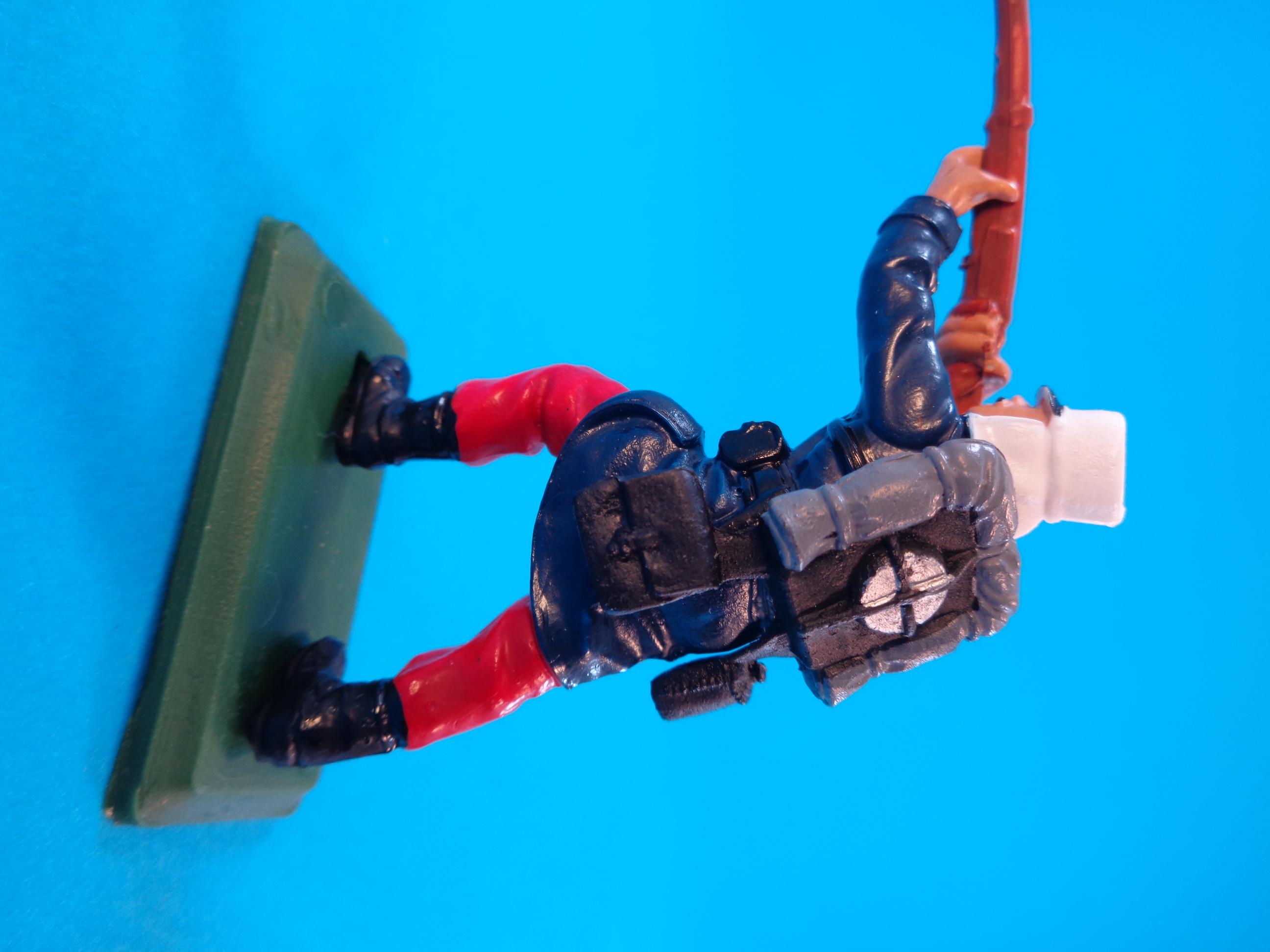 provisionally and manufactured at Saint Etienne, from 1910 to 1914, for the purpose of arming the observation crews of French military aircrafts.
provisionally and manufactured at Saint Etienne, from 1910 to 1914, for the purpose of arming the observation crews of French military aircrafts.In 1914, when World War I broke out, French troops did not operate any
 light machine gun. It was clear that this type of weapon had become indispensable in modern warfare, because of the increase in firepower it provides to an infantry section. Spurred by General Joffre, it was decided to adopt the Chauchat, primarily because the pre-war "CS"(Chauchat-Sutter) machine rifle was a light and thus portable automatic weapon that had been designed to function with the 8mm Lebel service ammunition.
light machine gun. It was clear that this type of weapon had become indispensable in modern warfare, because of the increase in firepower it provides to an infantry section. Spurred by General Joffre, it was decided to adopt the Chauchat, primarily because the pre-war "CS"(Chauchat-Sutter) machine rifle was a light and thus portable automatic weapon that had been designed to function with the 8mm Lebel service ammunition. Furthermore due to its projected low cost of manufacture and relative simplicity, the newly adopted (1915) "CSRG" machine rifle could be mass produced by a
Furthermore due to its projected low cost of manufacture and relative simplicity, the newly adopted (1915) "CSRG" machine rifle could be mass produced by a and Gladiator, all terms which are self-explanatory. The "Gladiator" factory which was a peacetime manufacturer of motor cars and motorcycles located in Pre-Saint-Gervais (a northern suburb of Paris),
and Gladiator, all terms which are self-explanatory. The "Gladiator" factory which was a peacetime manufacturer of motor cars and motorcycles located in Pre-Saint-Gervais (a northern suburb of Paris), became the principal industrial producer of Chauchat machine rifles during WW-1. Later on, in 1918, a company named SIDARME located away from Paris ,also participated in the mass manufacture of CS
became the principal industrial producer of Chauchat machine rifles during WW-1. Later on, in 1918, a company named SIDARME located away from Paris ,also participated in the mass manufacture of CS
The Chauchat light machine gun, or machine rifle, functioned on the long barrel recoil principle with a gas assist. The chronology of the patents makes it clear that Louis Chauchat had simply borrowed the mechanical principles
 of an already existing long barrel recoil, semi-automatic rifle filed by John Browning in his milestone U.S. Patent 659,786 of October 16,
of an already existing long barrel recoil, semi-automatic rifle filed by John Browning in his milestone U.S. Patent 659,786 of October 16, 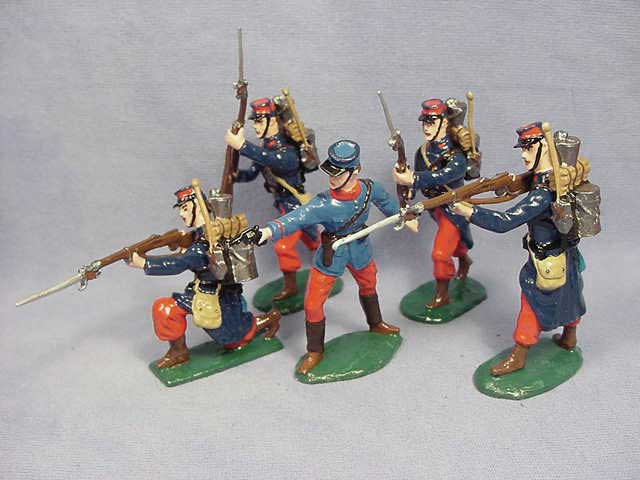 1900. This precursor was theRemington Model 8 semi-automatic rifle which was successfully marketed (80,000) between 1906 and 1936.
1900. This precursor was theRemington Model 8 semi-automatic rifle which was successfully marketed (80,000) between 1906 and 1936.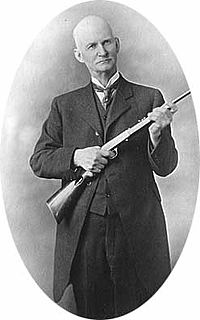
Browning's long barrel recoil principle was also applied in 1907 to autoloading shotguns: the classic "Browning  Auto-5" and the "Remington Model 11". Following behind these commercial developments, Lt. Colonel Louis
Auto-5" and the "Remington Model 11". Following behind these commercial developments, Lt. Colonel Louis  Chauchat and armorer Charles Sutter, atAtelier de Construction de Puteaux (APX) arsenal since 1903, proposed a portable light machine gun based on the working principles applied in Browning's Remington Model 8 rifle. In 1908 it was dubbed Fusil-Mitrailleur C.S. ("C.S. Machine Rifle") and it used the 8 mm Lebel service cartridge. An improved version of the "CS" was also
Chauchat and armorer Charles Sutter, atAtelier de Construction de Puteaux (APX) arsenal since 1903, proposed a portable light machine gun based on the working principles applied in Browning's Remington Model 8 rifle. In 1908 it was dubbed Fusil-Mitrailleur C.S. ("C.S. Machine Rifle") and it used the 8 mm Lebel service cartridge. An improved version of the "CS" was also  tested in 1913 with promising results. After the war had started in August 1914, the realization sunk in that automatic weapons had become essential for success on the battlefields. General Joffre, the Commander in Chief,
tested in 1913 with promising results. After the war had started in August 1914, the realization sunk in that automatic weapons had become essential for success on the battlefields. General Joffre, the Commander in Chief, pressed to adopt a portable automatic weapon for the infantry.
pressed to adopt a portable automatic weapon for the infantry. The only thoroughly tested light machine gun which also fired the 8 mm Lebel cartridge was the "CS" machine rifle. It was quickly modified into the Fusil Mitrailleur Mle 1915 CSRGand adopted in July 1915. The "R" in CSRG stands for
The only thoroughly tested light machine gun which also fired the 8 mm Lebel cartridge was the "CS" machine rifle. It was quickly modified into the Fusil Mitrailleur Mle 1915 CSRGand adopted in July 1915. The "R" in CSRG stands for  Ribeyrolles, manager of the Gladiator ("G") cycle factory, in the Paris suburb of Pre-Saint-Gervais. Manufacturing of the CSRG begun there in early 1916 and ended in December 1918. Another facility away from Paris (SIDARME) also manufactured CSRG's beginning in 1917. The Chauchat machine rifle (CSRG) delivered to the French Army fired the 8 mm Lebel cartridge at the slow rate of 250 rpm. At 9 kilograms (19.8 pounds), the gun was much lighter
Ribeyrolles, manager of the Gladiator ("G") cycle factory, in the Paris suburb of Pre-Saint-Gervais. Manufacturing of the CSRG begun there in early 1916 and ended in December 1918. Another facility away from Paris (SIDARME) also manufactured CSRG's beginning in 1917. The Chauchat machine rifle (CSRG) delivered to the French Army fired the 8 mm Lebel cartridge at the slow rate of 250 rpm. At 9 kilograms (19.8 pounds), the gun was much lighter than the contemporary portable light machine guns of the period, such as the Hotchkiss M1909 Benet-Mercie
than the contemporary portable light machine guns of the period, such as the Hotchkiss M1909 Benet-Mercie  machine gun (12 kg/26 lb) and the Lewis Gun (13 kg/29 pounds). It was a select fire weapon, either automatic or semi-automatic mode. The gun's ergonomics, rather than its recoil, were difficult to cope with but could be tamed by well-trained gunners.
machine gun (12 kg/26 lb) and the Lewis Gun (13 kg/29 pounds). It was a select fire weapon, either automatic or semi-automatic mode. The gun's ergonomics, rather than its recoil, were difficult to cope with but could be tamed by well-trained gunners.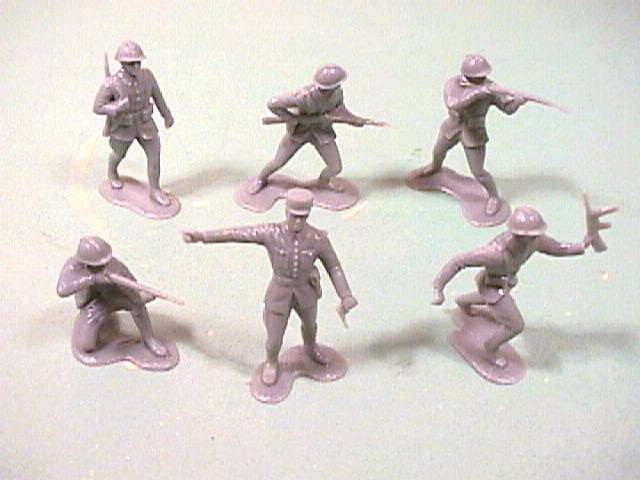
 Auto-5" and the "Remington Model 11". Following behind these commercial developments, Lt. Colonel Louis
Auto-5" and the "Remington Model 11". Following behind these commercial developments, Lt. Colonel Louis  Chauchat and armorer Charles Sutter, atAtelier de Construction de Puteaux (APX) arsenal since 1903, proposed a portable light machine gun based on the working principles applied in Browning's Remington Model 8 rifle. In 1908 it was dubbed Fusil-Mitrailleur C.S. ("C.S. Machine Rifle") and it used the 8 mm Lebel service cartridge. An improved version of the "CS" was also
Chauchat and armorer Charles Sutter, atAtelier de Construction de Puteaux (APX) arsenal since 1903, proposed a portable light machine gun based on the working principles applied in Browning's Remington Model 8 rifle. In 1908 it was dubbed Fusil-Mitrailleur C.S. ("C.S. Machine Rifle") and it used the 8 mm Lebel service cartridge. An improved version of the "CS" was also  tested in 1913 with promising results. After the war had started in August 1914, the realization sunk in that automatic weapons had become essential for success on the battlefields. General Joffre, the Commander in Chief,
tested in 1913 with promising results. After the war had started in August 1914, the realization sunk in that automatic weapons had become essential for success on the battlefields. General Joffre, the Commander in Chief, pressed to adopt a portable automatic weapon for the infantry.
pressed to adopt a portable automatic weapon for the infantry. The only thoroughly tested light machine gun which also fired the 8 mm Lebel cartridge was the "CS" machine rifle. It was quickly modified into the Fusil Mitrailleur Mle 1915 CSRGand adopted in July 1915. The "R" in CSRG stands for
The only thoroughly tested light machine gun which also fired the 8 mm Lebel cartridge was the "CS" machine rifle. It was quickly modified into the Fusil Mitrailleur Mle 1915 CSRGand adopted in July 1915. The "R" in CSRG stands for  Ribeyrolles, manager of the Gladiator ("G") cycle factory, in the Paris suburb of Pre-Saint-Gervais. Manufacturing of the CSRG begun there in early 1916 and ended in December 1918. Another facility away from Paris (SIDARME) also manufactured CSRG's beginning in 1917. The Chauchat machine rifle (CSRG) delivered to the French Army fired the 8 mm Lebel cartridge at the slow rate of 250 rpm. At 9 kilograms (19.8 pounds), the gun was much lighter
Ribeyrolles, manager of the Gladiator ("G") cycle factory, in the Paris suburb of Pre-Saint-Gervais. Manufacturing of the CSRG begun there in early 1916 and ended in December 1918. Another facility away from Paris (SIDARME) also manufactured CSRG's beginning in 1917. The Chauchat machine rifle (CSRG) delivered to the French Army fired the 8 mm Lebel cartridge at the slow rate of 250 rpm. At 9 kilograms (19.8 pounds), the gun was much lighter than the contemporary portable light machine guns of the period, such as the Hotchkiss M1909 Benet-Mercie
than the contemporary portable light machine guns of the period, such as the Hotchkiss M1909 Benet-Mercie  machine gun (12 kg/26 lb) and the Lewis Gun (13 kg/29 pounds). It was a select fire weapon, either automatic or semi-automatic mode. The gun's ergonomics, rather than its recoil, were difficult to cope with but could be tamed by well-trained gunners.
machine gun (12 kg/26 lb) and the Lewis Gun (13 kg/29 pounds). It was a select fire weapon, either automatic or semi-automatic mode. The gun's ergonomics, rather than its recoil, were difficult to cope with but could be tamed by well-trained gunners.The Chauchat's construction was composite thus not fully consistent in terms of parts quality. The recoiling barrel sleeve as well as all the bolt moving parts were precision milled from solid steel and always fully interchangeable.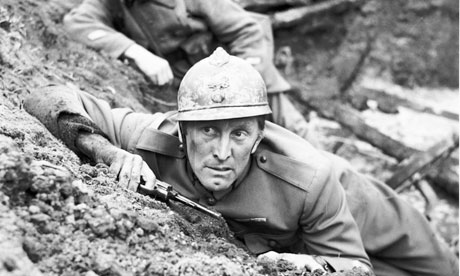 The barrels were standard Lebel barrels that had been shortened from the muzzle end. The barrel radiators were made of ribbed cast aluminum. On the other hand, the outer breech housing was a simple tube, betraying Gladiator's pre-war activities in motorcycle manufacturing. The rest of the gun was built of stamped metal plates of mediocre quality. Side plate assemblies were held by screws that could become loose after prolonged firing. The sights were often misaligned on the Gladiator-made guns, creating aiming problems that had to be corrected by the gunners. The exact number on record of Chauchat machine gun manufactured between 1916 and the end of 1918 is 262,300. The Gladiator factory manufactured 225,700 CSRGs in 8 mm Lebel plus 18,000 in the US caliber .30-06 between April 1916 and November 1918. SIDARME manufactured 18,600 CSRGs, exclusively in 8 mm Lebel, between October 1917 and November 1918. The SIDARME manufactured Chauchats were generally better finished and better functioning than those made by Gladiator. The French Army had a stock of 63,000 CSRG's just before the Armistice.
The barrels were standard Lebel barrels that had been shortened from the muzzle end. The barrel radiators were made of ribbed cast aluminum. On the other hand, the outer breech housing was a simple tube, betraying Gladiator's pre-war activities in motorcycle manufacturing. The rest of the gun was built of stamped metal plates of mediocre quality. Side plate assemblies were held by screws that could become loose after prolonged firing. The sights were often misaligned on the Gladiator-made guns, creating aiming problems that had to be corrected by the gunners. The exact number on record of Chauchat machine gun manufactured between 1916 and the end of 1918 is 262,300. The Gladiator factory manufactured 225,700 CSRGs in 8 mm Lebel plus 18,000 in the US caliber .30-06 between April 1916 and November 1918. SIDARME manufactured 18,600 CSRGs, exclusively in 8 mm Lebel, between October 1917 and November 1918. The SIDARME manufactured Chauchats were generally better finished and better functioning than those made by Gladiator. The French Army had a stock of 63,000 CSRG's just before the Armistice.
 The barrels were standard Lebel barrels that had been shortened from the muzzle end. The barrel radiators were made of ribbed cast aluminum. On the other hand, the outer breech housing was a simple tube, betraying Gladiator's pre-war activities in motorcycle manufacturing. The rest of the gun was built of stamped metal plates of mediocre quality. Side plate assemblies were held by screws that could become loose after prolonged firing. The sights were often misaligned on the Gladiator-made guns, creating aiming problems that had to be corrected by the gunners. The exact number on record of Chauchat machine gun manufactured between 1916 and the end of 1918 is 262,300. The Gladiator factory manufactured 225,700 CSRGs in 8 mm Lebel plus 18,000 in the US caliber .30-06 between April 1916 and November 1918. SIDARME manufactured 18,600 CSRGs, exclusively in 8 mm Lebel, between October 1917 and November 1918. The SIDARME manufactured Chauchats were generally better finished and better functioning than those made by Gladiator. The French Army had a stock of 63,000 CSRG's just before the Armistice.
The barrels were standard Lebel barrels that had been shortened from the muzzle end. The barrel radiators were made of ribbed cast aluminum. On the other hand, the outer breech housing was a simple tube, betraying Gladiator's pre-war activities in motorcycle manufacturing. The rest of the gun was built of stamped metal plates of mediocre quality. Side plate assemblies were held by screws that could become loose after prolonged firing. The sights were often misaligned on the Gladiator-made guns, creating aiming problems that had to be corrected by the gunners. The exact number on record of Chauchat machine gun manufactured between 1916 and the end of 1918 is 262,300. The Gladiator factory manufactured 225,700 CSRGs in 8 mm Lebel plus 18,000 in the US caliber .30-06 between April 1916 and November 1918. SIDARME manufactured 18,600 CSRGs, exclusively in 8 mm Lebel, between October 1917 and November 1918. The SIDARME manufactured Chauchats were generally better finished and better functioning than those made by Gladiator. The French Army had a stock of 63,000 CSRG's just before the Armistice.
The French military at the time considered the Chauchat's performance as inferior in comparison to the reliable heavy Hotchkiss M1914 machine gun. However, whereas the Hotchkiss was a weighty, tripod-mounted weapon, the Chauchat was a light gun that could be mass-produced quickly, cheaply and in very large numbers. It was also never intended to take the role of static defense of the heavy machine gun but to be a portable weapon that  would increase the firepower of infantry squads moving forward during the assault. A significant plus is that it could easily be fired while walking, by hanging the Chauchat's sling over a shoulder hook located onto the gunner's upper left side of his Y strap. The other light squad automatic weapons available at the time included the Hotchkiss M1909 Benet-Mercie machine gun,
would increase the firepower of infantry squads moving forward during the assault. A significant plus is that it could easily be fired while walking, by hanging the Chauchat's sling over a shoulder hook located onto the gunner's upper left side of his Y strap. The other light squad automatic weapons available at the time included the Hotchkiss M1909 Benet-Mercie machine gun, the Madsen machine gun or the Lewis Gun, but of these only the Hotchkiss M1909 could be successfully converted to accept 8 mm Lebel ammunition.
the Madsen machine gun or the Lewis Gun, but of these only the Hotchkiss M1909 could be successfully converted to accept 8 mm Lebel ammunition.
 would increase the firepower of infantry squads moving forward during the assault. A significant plus is that it could easily be fired while walking, by hanging the Chauchat's sling over a shoulder hook located onto the gunner's upper left side of his Y strap. The other light squad automatic weapons available at the time included the Hotchkiss M1909 Benet-Mercie machine gun,
would increase the firepower of infantry squads moving forward during the assault. A significant plus is that it could easily be fired while walking, by hanging the Chauchat's sling over a shoulder hook located onto the gunner's upper left side of his Y strap. The other light squad automatic weapons available at the time included the Hotchkiss M1909 Benet-Mercie machine gun, the Madsen machine gun or the Lewis Gun, but of these only the Hotchkiss M1909 could be successfully converted to accept 8 mm Lebel ammunition.
the Madsen machine gun or the Lewis Gun, but of these only the Hotchkiss M1909 could be successfully converted to accept 8 mm Lebel ammunition.In 1917 Petain, having heard various rumblings about the Chauchat, ordered a major survey to discover what, if any, its problems were.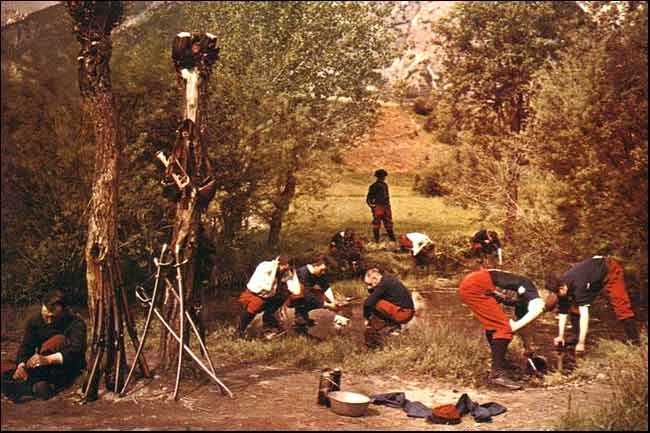
I have seen reports that amongst the main findings were that the gun would stop firing when it got hot (at about 300 rounds) and there would be a significant delay until it cooled down so firing could resume, but of course it would then soon get hot again!

This was not the barrel getting too hot (as a spare barrel could be carried) but the main mechanism of the gun. It seems that this was the soldats’ main grumble. When used as a defensive weapon it could not be relied upon to deliver enough sustained fire to hold off a German counter attack. The other big problem was that dirt got in through the slots in the magazines causing jams – each time this happened the gun had to be stripped down. I’ve seen a mention that Petain’s survey found that about 30% of the guns jammed this way. Other complaints appear to have been that parts of the gun were assembled with screws with a very loose fit so that as the gun vibrated with firing these could work loose and bits would fall off and the magazines themselves were very poorly made and sometimes would not fit.
I would like to see Petain’s reaction in detail. What little reference I can find seems to suggest that he took the line that as the army had got so many of the things and there was no readily available replacement (Britain was already at max capacity with Lewis Gun production and had none to spare) they’d have to try and live with it. There seems to have been an instruction that it was only to be used as an assault weapon firing short bursts and then only when there were enough Hotckisses around to provide support and defence against a counter attack.


I would like to see Petain’s reaction in detail. What little reference I can find seems to suggest that he took the line that as the army had got so many of the things and there was no readily available replacement (Britain was already at max capacity with Lewis Gun production and had none to spare) they’d have to try and live with it. There seems to have been an instruction that it was only to be used as an assault weapon firing short bursts and then only when there were enough Hotckisses around to provide support and defence against a counter attack.
The 1916 survey included range trials aimed at determining the practical limits of sustained automatic fire. In these trials, which involved three separate weapons, the first stoppage took place after 300, 350 or 380 rounds of uninterrupted automatic fire.

(Needless to say, firing was stopped so that the gunners could change magazines. I assume that the gunners were firing bursts of three to five rounds, rather than just pulling the trigger until each magazine was empty, but I do not know that for a fact. 

The 1917 survery, encompassed a number of different infantry weapons, and had, indeed, been commissioned by Pétain. Instead of range trials, however, it was conducted by means of questionaires that were filled out by the commanders of infantry regiments, infantry brigades and infantry divisions. The chief complaints of the respondents were ill-fitting magazines and stoppages due to dirt getting into the mechanism. Complaints about overheating, however, were conspicuous by their absence.

Indeed, some respondents were quite complimentary about the role that the Chauchat played in defending against German counterattacks where they 'effectively played the role of machineguns'. (One explanation for this was the lack of opportunities to fire 300 rounds without a break. 

Most of the German counterattacks faced by French troops in 1917 would not have presented the kind of targets that would have called for the uninterrupted firing of either Chauchats or machineguns. Rather, the targets, which would have consisted of squads breaking from cover for very short periods of time, would have been far too fleeting in nature.) One thing to bear in mind is that the Chauchats abandoned by the Americans in France were not those reworked to take the American round but standard French 8mm models! I've since found extracts from in battle messages from American units asking for "more American and also Chauchat ammuntion" to be sent forward - indicating that their Chauchats were not firing US ammunition.
After some digging I've come the following conclusionsThe 'American' version was never used on active service. There are a number of references to it being dumped after trials.

"The American Expeditionary Force, awaiting delivery of their intended primary weapon, the Browning M1917 machine gun, intended to adopt the Chauchat as an interim measure, purchasing 34,000 in 1917. In order to make the transition to the Browning easier the Chauchat was modified to use 0.30 inch ammunition. However the French manufacturers used incorrect chamber measurements with the result that the weapons performed poorly.
In the event the AEF largely used French, i.e. unmodified, versions of the Chauchat rather than the U.S. model until the Browning became available."but when the Americans realized how deficient the M1917 .30-06 Chauchat was, it was unceremoniously dumped. The AEF used the French M1915 for the rest of the war."That the Chauchat was abandoned after jamming is clear.I have seen references to some Chauchats popping up in Vietnam so one wonders who Interarmco's customers were

Menard Spring 1914
No one was able to make high score with the Chauchat. The targets looked like they had been hit by fragments of a shell; yet the men insisted they had aimed and held the same for each shot. The French instructors contended that the effect of this dispersion was even more destructive to the morale of the enemy than direct hits, but the American soldiers were never satisfied with the result on the range and distrusted the Chauchat in campaigns. "During WWI, American troopers were issued a French light, automatic rifle, as part of an economic sweetheart deal with the French. The gun, called the CSRG (Chauchat), was notoriously unreliable, and that fact was well known by Americans and French alike. But, it was issued anyway, and we will never know how many Americans were needlessly killed as a result
"Chauchats were issued instead of Browning automatic rifles and so on down the line. But with typical Yankee ingenuity, we proceeded to do the best we could with what we had at hand.
As soon as a Chauchat jammed, it was left behind for the pioneers to salvage."
"Chauchats were issued instead of Browning automatic rifles and so on down the line. But with typical Yankee ingenuity, we proceeded to do the best we could with what we had at hand.

As soon as a Chauchat jammed, it was left behind for the pioneers to salvage."
THE FINNISH
Small number (15 or so) of Chauchat light machineguns had cumulated to hands of Finnish Armed Forces by end of Finnish Civil War in 1918. Certain photograph suggests that they may have been captured from the Russians, but some the Finns might have also received some from the Germans. At that time Finnish military wasn't terribly interested about them and year 1937 they were sold abroad. During Winter War Finnish military equipment shortage led to second coming of these dubious weapons, as France "generously donated" some 5,000 Chauchat light machineguns and 10 million rounds of ammunition for them to Finland. The weapons were delivered to Finland in February - March of 1940. This was so late that Chauchat were not issued to Finnish troops during Winter War, but during early part of Continuation War even some unfortunate front-line units got these issued as their light machineguns. At earliest possible moment they were replaced with captured Soviet light machineguns and were soon only used by home-front units and some field artillery units. After World War 2 Chauchat light machineguns remained warehoused until 1955 when selling them abroad begun, the last ones were sold to Interarmco in 1959 - 1960
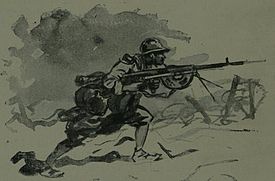 Several prototypes of dirt-proof, fully enclosed Chauchat magazines were successfully tested in May and June 1918, but came too late. Stronger but still open-sided standard magazines as well as tailored canvas gun covers protecting the gun against mud during transport had previously been issued to all Chauchat gunners in 1917. The initial two-man Chauchat team was also found insufficient and eventually grew to a four-man squad by October 1917 (the squad leader, the gunner, the assistant gunner who handled the magazines plus one additional
Several prototypes of dirt-proof, fully enclosed Chauchat magazines were successfully tested in May and June 1918, but came too late. Stronger but still open-sided standard magazines as well as tailored canvas gun covers protecting the gun against mud during transport had previously been issued to all Chauchat gunners in 1917. The initial two-man Chauchat team was also found insufficient and eventually grew to a four-man squad by October 1917 (the squad leader, the gunner, the assistant gunner who handled the magazines plus one additional  magazine carrier).The Mle 1915 Chauchat's performance on the battlefields drew mixed reviews from the users when the war was stagnating in the mud of the trenches in 1916. This brought about a survey, regiment by regiment, requested by General Pétain in late 1916 -
magazine carrier).The Mle 1915 Chauchat's performance on the battlefields drew mixed reviews from the users when the war was stagnating in the mud of the trenches in 1916. This brought about a survey, regiment by regiment, requested by General Pétain in late 1916 - the survey's essential conclusion was that the open sided magazines were defective and caused about two thirds of all stoppages. Loose earth, grit and other particles easily entered the gun through these open-sided magazines, an ever present risk in the muddy environment of the trenches. Its long recoil action is often cited as a source of problems for the shooter. However recent firing tests have demonstrated that it is the Chauchat's ergonomics and its loose bipod, rather than its recoil, that makes it a difficult gun to keep on target beyond very short bursts. On some of the Gladiator-made guns, the sights also made the Chauchat shoot systematically too low and to the right. Overheating after long continuous firings (about 400 rounds) dilated the recoiling barrel sleeve to the point where it refused to return forward until the gun had cooled off, thus creating a stoppage that could last 10 minutes. Hence, the manuals recommended firing only in short bursts or semi-auto and insisted that only good magazines should be used.
the survey's essential conclusion was that the open sided magazines were defective and caused about two thirds of all stoppages. Loose earth, grit and other particles easily entered the gun through these open-sided magazines, an ever present risk in the muddy environment of the trenches. Its long recoil action is often cited as a source of problems for the shooter. However recent firing tests have demonstrated that it is the Chauchat's ergonomics and its loose bipod, rather than its recoil, that makes it a difficult gun to keep on target beyond very short bursts. On some of the Gladiator-made guns, the sights also made the Chauchat shoot systematically too low and to the right. Overheating after long continuous firings (about 400 rounds) dilated the recoiling barrel sleeve to the point where it refused to return forward until the gun had cooled off, thus creating a stoppage that could last 10 minutes. Hence, the manuals recommended firing only in short bursts or semi-auto and insisted that only good magazines should be used.
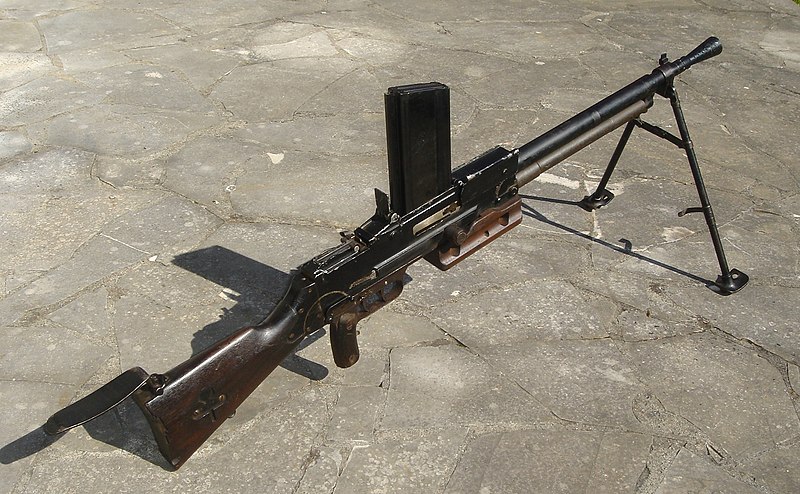 . The new light machine gun (in French :fusil-mitrailleur) had been designed by Lt. Colonel Reibel and Controller Chosse and was gas operated, like the Browning Automatic Rifle (BAR) which had inspired the new gun's internal
. The new light machine gun (in French :fusil-mitrailleur) had been designed by Lt. Colonel Reibel and Controller Chosse and was gas operated, like the Browning Automatic Rifle (BAR) which had inspired the new gun's internal features. The venerable 8 mm Lebel round, which was one of the major handicaps of the Chauchat, had been
features. The venerable 8 mm Lebel round, which was one of the major handicaps of the Chauchat, had been  discarded for a 7.5 mm rimless cartridge resembling a necked down 7.92 mm German Mauser round. The F.M. Mle 1924 featured a bipod
discarded for a 7.5 mm rimless cartridge resembling a necked down 7.92 mm German Mauser round. The F.M. Mle 1924 featured a bipod , an in-line stock, a pistol grip, a top-mounted 25 round magazine and a bolt hold-open after the magazine's last round had been fired. Protection of all the openings against mud and dust was excellent.
, an in-line stock, a pistol grip, a top-mounted 25 round magazine and a bolt hold-open after the magazine's last round had been fired. Protection of all the openings against mud and dust was excellent.  The cyclic rate was 450 rounds per minute. It was modified in 1929 to accept a slightly shorter 7.5 mm cartridge that could not be mistaken for a German Mauser round or a Swiss 7.5 mm round. The new weapon and modern
The cyclic rate was 450 rounds per minute. It was modified in 1929 to accept a slightly shorter 7.5 mm cartridge that could not be mistaken for a German Mauser round or a Swiss 7.5 mm round. The new weapon and modern 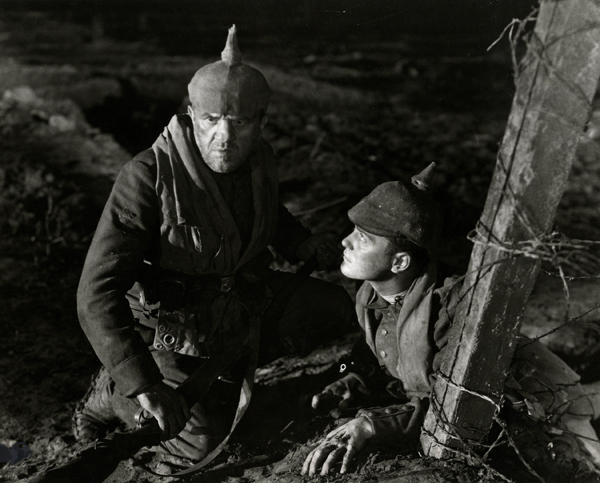 rimless ammunition had finally corrected all the problems associated with the Chauchat. The reliable and well-liked FM (Fusil-Mitrailleur) Mle 1924
rimless ammunition had finally corrected all the problems associated with the Chauchat. The reliable and well-liked FM (Fusil-Mitrailleur) Mle 1924  was manufactured in large numbers (187,000) and widely used by the French Army until the late 1950s. The
was manufactured in large numbers (187,000) and widely used by the French Army until the late 1950s. The  Gendarmerie Nationale used it until the late 90s when it was phased out after all 7.5mm ammunition stocks were depleted.In 1917 the French Army adopted the Mle. 1917 semi-automatic rifle
Gendarmerie Nationale used it until the late 90s when it was phased out after all 7.5mm ammunition stocks were depleted.In 1917 the French Army adopted the Mle. 1917 semi-automatic rifle  made by Ribeyrolles, Sutter and Chauchat (RSC), who already developed the "Chauchat" Mle. 1915 LMG. In 1918 they presented a "pistolet-mitrailleur" (submachine gun), meant to be used for close-range protection for the French tank crews. The weapon is based on the RSC Mle. 1917 semi-automatic rifle mechanism. The first trials used a Mannlicher-Berthier clip holding 8 cartridges. The trials continued until 1919 with a weapon using the same magazine as the Mle. 1915 LMG.
made by Ribeyrolles, Sutter and Chauchat (RSC), who already developed the "Chauchat" Mle. 1915 LMG. In 1918 they presented a "pistolet-mitrailleur" (submachine gun), meant to be used for close-range protection for the French tank crews. The weapon is based on the RSC Mle. 1917 semi-automatic rifle mechanism. The first trials used a Mannlicher-Berthier clip holding 8 cartridges. The trials continued until 1919 with a weapon using the same magazine as the Mle. 1915 LMG. 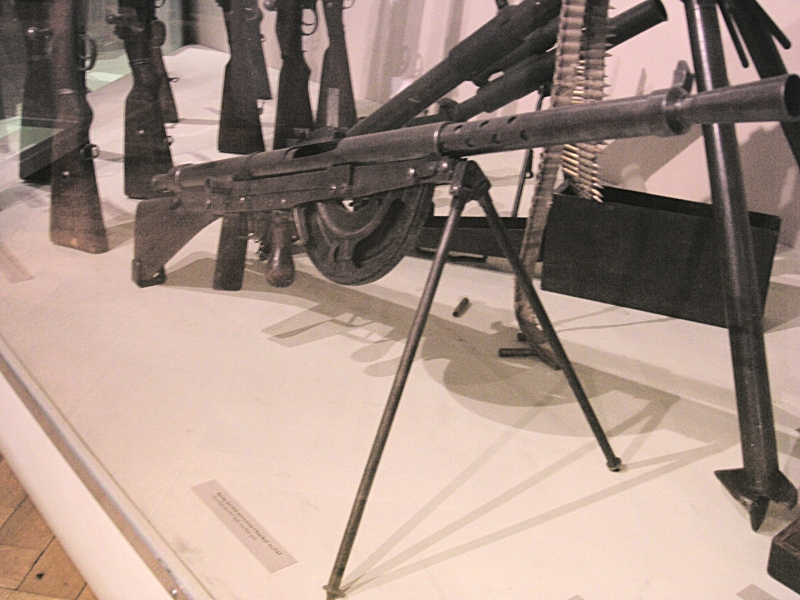 The results were satisfactory but the weapon was too powerful for the intended self protection use. A mix of standard and tracer bullets was planned to be used to assist in aiming
The results were satisfactory but the weapon was too powerful for the intended self protection use. A mix of standard and tracer bullets was planned to be used to assist in aiming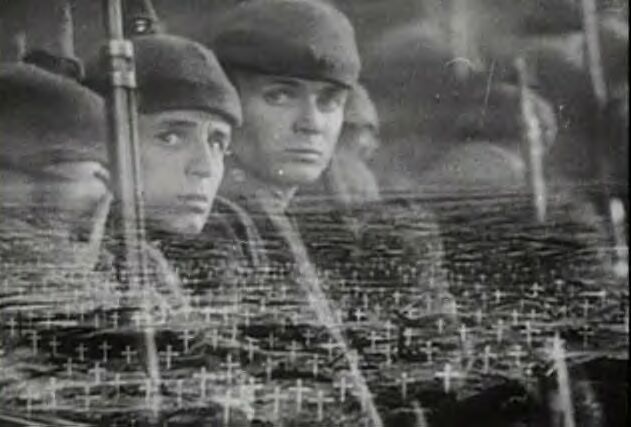

Madsen was a light machine gun developed by Julius A. Rasmussen and Theodor Schoubue and proposed for adoption by Captain Vilhelm Herman Oluf Madsen, the Danish Minister of War and adopted by the Danish Army in 1902. It was one of the first true light machine guns produced in quantity and sold to over 34 different countries worldwide, seeing extensive combat use in various conflicts around the globe for over 100 years. The Madsen was produced by Compagnie Madsen A/S (later operating as Dansk Rekyl Riffel Syndikat A/S and then Dansk Industri Syndikat A/S).he Madsen has a rather sophisticated and uncommon operating cycle not used in any other crew-served weapon. The machine gun uses a mixed recoil-operated locking system with a hinged bolt that is patterned after the lever-action Peabody Martini breechblock. The recoil operation is part short and part long recoil. After firing a round, the initial recoil impulse drives the barrel, barrel extension, and bolt to the rear. A pin on the right side of the bolt moves backward in grooves in an operating cam plate mounted to the right side of the receiver. After 12.7 mm (0.5 in) of travel, the bolt is cammed upward, away from the breech (the "short" portion of the recoil system). The barrel and barrel extension continue to move rearward to a point slightly exceeding the combined overall length of the cartridge case and projectile (the long portion of the recoil system, responsible for the weapon's low rate of fire).
The recoil operation is part short and part long recoil. After firing a round, the initial recoil impulse drives the barrel, barrel extension, and bolt to the rear. A pin on the right side of the bolt moves backward in grooves in an operating cam plate mounted to the right side of the receiver. After 12.7 mm (0.5 in) of travel, the bolt is cammed upward, away from the breech (the "short" portion of the recoil system). The barrel and barrel extension continue to move rearward to a point slightly exceeding the combined overall length of the cartridge case and projectile (the long portion of the recoil system, responsible for the weapon's low rate of fire).
 The recoil operation is part short and part long recoil. After firing a round, the initial recoil impulse drives the barrel, barrel extension, and bolt to the rear. A pin on the right side of the bolt moves backward in grooves in an operating cam plate mounted to the right side of the receiver. After 12.7 mm (0.5 in) of travel, the bolt is cammed upward, away from the breech (the "short" portion of the recoil system). The barrel and barrel extension continue to move rearward to a point slightly exceeding the combined overall length of the cartridge case and projectile (the long portion of the recoil system, responsible for the weapon's low rate of fire).
The recoil operation is part short and part long recoil. After firing a round, the initial recoil impulse drives the barrel, barrel extension, and bolt to the rear. A pin on the right side of the bolt moves backward in grooves in an operating cam plate mounted to the right side of the receiver. After 12.7 mm (0.5 in) of travel, the bolt is cammed upward, away from the breech (the "short" portion of the recoil system). The barrel and barrel extension continue to move rearward to a point slightly exceeding the combined overall length of the cartridge case and projectile (the long portion of the recoil system, responsible for the weapon's low rate of fire).After the breech is exposed, an odd lever-type extractor/ejector, mounted under the barrel, is pivoted to the rear, extracting the empty case and ejecting it through the bottom of the receiver. The bolt's operating cam then forces the bolt face to pivot downward, aligning a cartridge feed groove in the left side of the bolt with the chamber. While the bolt and barrel are returning forward, a cartridge-rammer lever, mounted on the barrel extension, is pivoted forward, loading a fresh cartridge.It was used extensively by the Imperial Russian Army, which bought 1,250 examples and deployed them during theRusso-Japanese war, and was deployed (arming infantry companies, mountain troops and later storm troopers) in 1914 by the German Army in 7.92 mm calibre. It saw service during World War I. It was considered expensive to produce, but was known for its reliability. It was sold to 34 nations in a dozen different calibres before and after World War I, seeing service in China during the Warlord wars
and was deployed (arming infantry companies, mountain troops and later storm troopers) in 1914 by the German Army in 7.92 mm calibre. It saw service during World War I. It was considered expensive to produce, but was known for its reliability. It was sold to 34 nations in a dozen different calibres before and after World War I, seeing service in China during the Warlord wars
 and was deployed (arming infantry companies, mountain troops and later storm troopers) in 1914 by the German Army in 7.92 mm calibre. It saw service during World War I. It was considered expensive to produce, but was known for its reliability. It was sold to 34 nations in a dozen different calibres before and after World War I, seeing service in China during the Warlord wars
and was deployed (arming infantry companies, mountain troops and later storm troopers) in 1914 by the German Army in 7.92 mm calibre. It saw service during World War I. It was considered expensive to produce, but was known for its reliability. It was sold to 34 nations in a dozen different calibres before and after World War I, seeing service in China during the Warlord warsAmong the fighting forces with the Madsen in their arsenals in the immediate aftermath of World War I was the Czechoslovak Legionsin Russia, fighting the Bolsheviks in Siberia The gun was bought by Paraguay in the 1920s and early 1930s as that country quietly girded for war with Bolivia over mutual claims to the Gran Chaco region, and it served in the Paraguayan army in the Chaco War (1932–1935). Almost 400 were on hand when the war began, and more were bought as the war progressed. The Argentine Army detachment which protected
The gun was bought by Paraguay in the 1920s and early 1930s as that country quietly girded for war with Bolivia over mutual claims to the Gran Chaco region, and it served in the Paraguayan army in the Chaco War (1932–1935). Almost 400 were on hand when the war began, and more were bought as the war progressed. The Argentine Army detachment which protected  neutrality along the border with Paraguay and Bolivia during the Chaco War used the Madsen in combat operations at least once, in the course of an engagement against members of the Maká tribe commanded by deserters who had looted a farm and killed some of its inhabitants in 1933. WhenBrazil acquired some 23 CV-35 tankettes from Italy in the late 1930s, a
neutrality along the border with Paraguay and Bolivia during the Chaco War used the Madsen in combat operations at least once, in the course of an engagement against members of the Maká tribe commanded by deserters who had looted a farm and killed some of its inhabitants in 1933. WhenBrazil acquired some 23 CV-35 tankettes from Italy in the late 1930s, a  majority of the vehicles were armed with twin-mounted 7 mm Madsens. Ireland had a total of 24 Madsen machine guns all in .303 calibre. They were fitted to its Landsverk L60 light tanks
majority of the vehicles were armed with twin-mounted 7 mm Madsens. Ireland had a total of 24 Madsen machine guns all in .303 calibre. They were fitted to its Landsverk L60 light tanks ,Leyland Armoured Cars,
,Leyland Armoured Cars, Landsverk L180 armoured cars and Dodge Armoured Cars. In the 1950s those left in Irish service were replaced
Landsverk L180 armoured cars and Dodge Armoured Cars. In the 1950s those left in Irish service were replaced with .30 Browning machine guns
with .30 Browning machine guns ]
]
 The gun was bought by Paraguay in the 1920s and early 1930s as that country quietly girded for war with Bolivia over mutual claims to the Gran Chaco region, and it served in the Paraguayan army in the Chaco War (1932–1935). Almost 400 were on hand when the war began, and more were bought as the war progressed. The Argentine Army detachment which protected
The gun was bought by Paraguay in the 1920s and early 1930s as that country quietly girded for war with Bolivia over mutual claims to the Gran Chaco region, and it served in the Paraguayan army in the Chaco War (1932–1935). Almost 400 were on hand when the war began, and more were bought as the war progressed. The Argentine Army detachment which protected  neutrality along the border with Paraguay and Bolivia during the Chaco War used the Madsen in combat operations at least once, in the course of an engagement against members of the Maká tribe commanded by deserters who had looted a farm and killed some of its inhabitants in 1933. WhenBrazil acquired some 23 CV-35 tankettes from Italy in the late 1930s, a
neutrality along the border with Paraguay and Bolivia during the Chaco War used the Madsen in combat operations at least once, in the course of an engagement against members of the Maká tribe commanded by deserters who had looted a farm and killed some of its inhabitants in 1933. WhenBrazil acquired some 23 CV-35 tankettes from Italy in the late 1930s, a  majority of the vehicles were armed with twin-mounted 7 mm Madsens. Ireland had a total of 24 Madsen machine guns all in .303 calibre. They were fitted to its Landsverk L60 light tanks
majority of the vehicles were armed with twin-mounted 7 mm Madsens. Ireland had a total of 24 Madsen machine guns all in .303 calibre. They were fitted to its Landsverk L60 light tanks ,Leyland Armoured Cars,
,Leyland Armoured Cars, Landsverk L180 armoured cars and Dodge Armoured Cars. In the 1950s those left in Irish service were replaced
Landsverk L180 armoured cars and Dodge Armoured Cars. In the 1950s those left in Irish service were replaced with .30 Browning machine guns
with .30 Browning machine guns ]
] Several prototypes of dirt-proof, fully enclosed Chauchat magazines were successfully tested in May and June 1918, but came too late. Stronger but still open-sided standard magazines as well as tailored canvas gun covers protecting the gun against mud during transport had previously been issued to all Chauchat gunners in 1917. The initial two-man Chauchat team was also found insufficient and eventually grew to a four-man squad by October 1917 (the squad leader, the gunner, the assistant gunner who handled the magazines plus one additional
Several prototypes of dirt-proof, fully enclosed Chauchat magazines were successfully tested in May and June 1918, but came too late. Stronger but still open-sided standard magazines as well as tailored canvas gun covers protecting the gun against mud during transport had previously been issued to all Chauchat gunners in 1917. The initial two-man Chauchat team was also found insufficient and eventually grew to a four-man squad by October 1917 (the squad leader, the gunner, the assistant gunner who handled the magazines plus one additional  magazine carrier).The Mle 1915 Chauchat's performance on the battlefields drew mixed reviews from the users when the war was stagnating in the mud of the trenches in 1916. This brought about a survey, regiment by regiment, requested by General Pétain in late 1916 -
magazine carrier).The Mle 1915 Chauchat's performance on the battlefields drew mixed reviews from the users when the war was stagnating in the mud of the trenches in 1916. This brought about a survey, regiment by regiment, requested by General Pétain in late 1916 - the survey's essential conclusion was that the open sided magazines were defective and caused about two thirds of all stoppages. Loose earth, grit and other particles easily entered the gun through these open-sided magazines, an ever present risk in the muddy environment of the trenches. Its long recoil action is often cited as a source of problems for the shooter. However recent firing tests have demonstrated that it is the Chauchat's ergonomics and its loose bipod, rather than its recoil, that makes it a difficult gun to keep on target beyond very short bursts. On some of the Gladiator-made guns, the sights also made the Chauchat shoot systematically too low and to the right. Overheating after long continuous firings (about 400 rounds) dilated the recoiling barrel sleeve to the point where it refused to return forward until the gun had cooled off, thus creating a stoppage that could last 10 minutes. Hence, the manuals recommended firing only in short bursts or semi-auto and insisted that only good magazines should be used.
the survey's essential conclusion was that the open sided magazines were defective and caused about two thirds of all stoppages. Loose earth, grit and other particles easily entered the gun through these open-sided magazines, an ever present risk in the muddy environment of the trenches. Its long recoil action is often cited as a source of problems for the shooter. However recent firing tests have demonstrated that it is the Chauchat's ergonomics and its loose bipod, rather than its recoil, that makes it a difficult gun to keep on target beyond very short bursts. On some of the Gladiator-made guns, the sights also made the Chauchat shoot systematically too low and to the right. Overheating after long continuous firings (about 400 rounds) dilated the recoiling barrel sleeve to the point where it refused to return forward until the gun had cooled off, thus creating a stoppage that could last 10 minutes. Hence, the manuals recommended firing only in short bursts or semi-auto and insisted that only good magazines should be used.
Later on, during the German spring offensive of 1918, the war had moved out of the mud of the trenches and into open fields, thus making the guns more reliable and easier to maintain. Furthermore, French infantry regiments  had been reorganized into multiple small (18 men) combat groups ("Demi-Sections de Combat"). Those were made up of a full Chauchat squad plus four VB (Viven-Bessiere) rifle grenade
had been reorganized into multiple small (18 men) combat groups ("Demi-Sections de Combat"). Those were made up of a full Chauchat squad plus four VB (Viven-Bessiere) rifle grenade 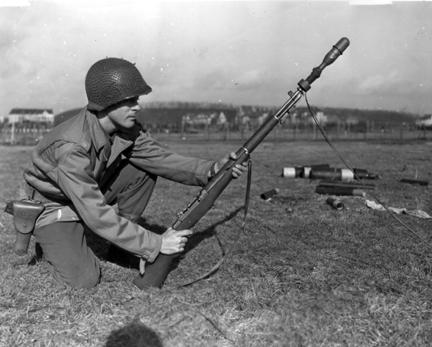 specialists and eight conventional grenadiers/riflemen. At this point in time, in 1918, the preserved French regimental records and statistics of medals given to Chauchat gunners document that they had contributed in no small part to the success of the new infantry tactics. Those were focused on the suppression of enemy machine gun nests by the combined action of portable (Chauchat) automatic fire plus the VB rifle grenades, always used within a range of less than 200 yards.
specialists and eight conventional grenadiers/riflemen. At this point in time, in 1918, the preserved French regimental records and statistics of medals given to Chauchat gunners document that they had contributed in no small part to the success of the new infantry tactics. Those were focused on the suppression of enemy machine gun nests by the combined action of portable (Chauchat) automatic fire plus the VB rifle grenades, always used within a range of less than 200 yards.
 had been reorganized into multiple small (18 men) combat groups ("Demi-Sections de Combat"). Those were made up of a full Chauchat squad plus four VB (Viven-Bessiere) rifle grenade
had been reorganized into multiple small (18 men) combat groups ("Demi-Sections de Combat"). Those were made up of a full Chauchat squad plus four VB (Viven-Bessiere) rifle grenade  specialists and eight conventional grenadiers/riflemen. At this point in time, in 1918, the preserved French regimental records and statistics of medals given to Chauchat gunners document that they had contributed in no small part to the success of the new infantry tactics. Those were focused on the suppression of enemy machine gun nests by the combined action of portable (Chauchat) automatic fire plus the VB rifle grenades, always used within a range of less than 200 yards.
specialists and eight conventional grenadiers/riflemen. At this point in time, in 1918, the preserved French regimental records and statistics of medals given to Chauchat gunners document that they had contributed in no small part to the success of the new infantry tactics. Those were focused on the suppression of enemy machine gun nests by the combined action of portable (Chauchat) automatic fire plus the VB rifle grenades, always used within a range of less than 200 yards.
The Chauchat was not comparable to the submachine guns of World War I, which used pistol rather than rifle ammunition and were thus less powerful. The Italian Villar-Perosa and Beretta Model 1918, the first two submachine guns to appear in World War I, fired the 9 mm Glisenti (a less powerful version of the 9mm Parabellum).
and Beretta Model 1918, the first two submachine guns to appear in World War I, fired the 9 mm Glisenti (a less powerful version of the 9mm Parabellum). The MP18 Bergmann, a German Army submachine gun fielded during the spring of 1918, fired the 9 mm Luger cartridge.
The MP18 Bergmann, a German Army submachine gun fielded during the spring of 1918, fired the 9 mm Luger cartridge. Compared to the Chauchat, these early submachine guns were used in relatively small numbers (thousands rather than hundreds of thousands), and had much shorter effective ranges.
Compared to the Chauchat, these early submachine guns were used in relatively small numbers (thousands rather than hundreds of thousands), and had much shorter effective ranges.
 and Beretta Model 1918, the first two submachine guns to appear in World War I, fired the 9 mm Glisenti (a less powerful version of the 9mm Parabellum).
and Beretta Model 1918, the first two submachine guns to appear in World War I, fired the 9 mm Glisenti (a less powerful version of the 9mm Parabellum). The MP18 Bergmann, a German Army submachine gun fielded during the spring of 1918, fired the 9 mm Luger cartridge.
The MP18 Bergmann, a German Army submachine gun fielded during the spring of 1918, fired the 9 mm Luger cartridge. Compared to the Chauchat, these early submachine guns were used in relatively small numbers (thousands rather than hundreds of thousands), and had much shorter effective ranges.
Compared to the Chauchat, these early submachine guns were used in relatively small numbers (thousands rather than hundreds of thousands), and had much shorter effective ranges.Unlike much heavier air-cooled and water-cooled machine guns (such as the Hotchkiss machine gun and the various belt-fed Maxim gun derivatives), and in common with theLewis Gun, the Chauchat was not designed for sustained defensive fire. The tactical edge expected from the Chauchat was to increase the infantry's offensive firepower during the assault.
and the various belt-fed Maxim gun derivatives), and in common with theLewis Gun, the Chauchat was not designed for sustained defensive fire. The tactical edge expected from the Chauchat was to increase the infantry's offensive firepower during the assault.
 and the various belt-fed Maxim gun derivatives), and in common with theLewis Gun, the Chauchat was not designed for sustained defensive fire. The tactical edge expected from the Chauchat was to increase the infantry's offensive firepower during the assault.
and the various belt-fed Maxim gun derivatives), and in common with theLewis Gun, the Chauchat was not designed for sustained defensive fire. The tactical edge expected from the Chauchat was to increase the infantry's offensive firepower during the assault.
After the USA had entered World War I, in April 1917, the American Expeditionary Force (AEF) arrived in France without automatic weapons or field artillery. It turned to the French ally rather than to the British to purchase  ordnance. General Pershing chose the Hotchkiss M1914 medium machine gun and the Chauchat light machine
ordnance. General Pershing chose the Hotchkiss M1914 medium machine gun and the Chauchat light machine gun (dubbed "automatic rifle" by the AEF and nicknamed the "Sho-Sho" by the troops) to equip the U.S. infantry and if handled properly served the soldiers well. Between August 1917 and the November 11, 1918 Armistice, Gladiator delivered to the AEF 16,000 Chauchat "automatic rifles" in 8 mm Lebel and, late in 1918, 18,000 Chauchats in .30-06.
gun (dubbed "automatic rifle" by the AEF and nicknamed the "Sho-Sho" by the troops) to equip the U.S. infantry and if handled properly served the soldiers well. Between August 1917 and the November 11, 1918 Armistice, Gladiator delivered to the AEF 16,000 Chauchat "automatic rifles" in 8 mm Lebel and, late in 1918, 18,000 Chauchats in .30-06.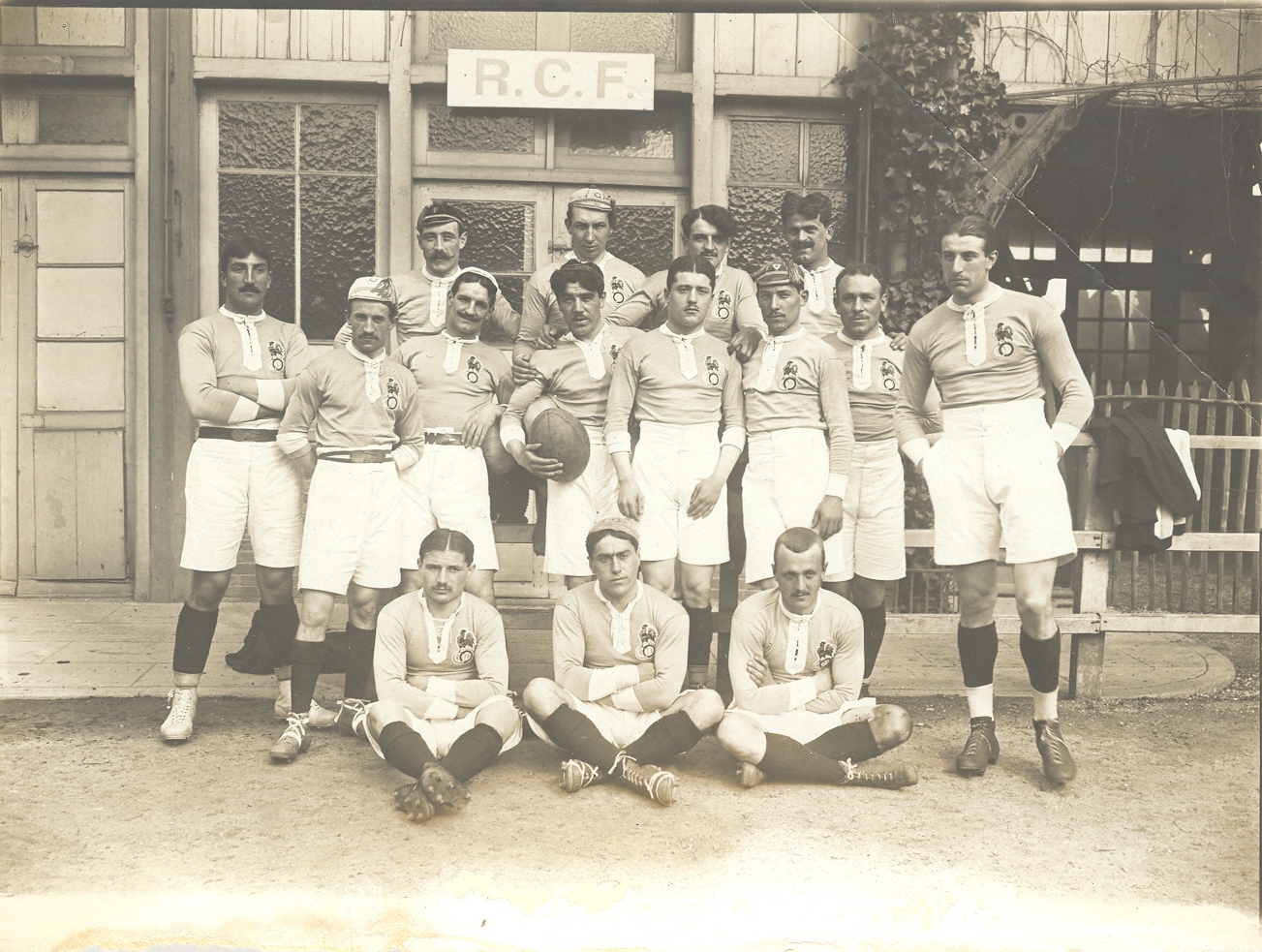
 ordnance. General Pershing chose the Hotchkiss M1914 medium machine gun and the Chauchat light machine
ordnance. General Pershing chose the Hotchkiss M1914 medium machine gun and the Chauchat light machine gun (dubbed "automatic rifle" by the AEF and nicknamed the "Sho-Sho" by the troops) to equip the U.S. infantry and if handled properly served the soldiers well. Between August 1917 and the November 11, 1918 Armistice, Gladiator delivered to the AEF 16,000 Chauchat "automatic rifles" in 8 mm Lebel and, late in 1918, 18,000 Chauchats in .30-06.
gun (dubbed "automatic rifle" by the AEF and nicknamed the "Sho-Sho" by the troops) to equip the U.S. infantry and if handled properly served the soldiers well. Between August 1917 and the November 11, 1918 Armistice, Gladiator delivered to the AEF 16,000 Chauchat "automatic rifles" in 8 mm Lebel and, late in 1918, 18,000 Chauchats in .30-06.
While the performance of the M1915 Chauchat in 8MM Lebel was considered acceptable at the time, the performance of the M1918 Chauchat in .30-06 was soon recognized as abysmal (and in large part the reason for  the gun's bad reputation) : the common problem was a failure to extract after the gun had fired only a few rounds and became slightly hot. Based on archival records and recent trials, including a firing test performed at Aberdeen
the gun's bad reputation) : the common problem was a failure to extract after the gun had fired only a few rounds and became slightly hot. Based on archival records and recent trials, including a firing test performed at Aberdeen  Proving Grounds in July 1973, the adaptation of the Chauchat to use .30-06 ammunition had been compromised by incorrect chamber measurements and sub-standard manufacturing.
Proving Grounds in July 1973, the adaptation of the Chauchat to use .30-06 ammunition had been compromised by incorrect chamber measurements and sub-standard manufacturing. The preserved archival records show that US inspectors at the Gladiator factory rejected about 40% of the 30-06 Chauchat production while the remaining 60% proved problematic whenever some small allocations reached the
The preserved archival records show that US inspectors at the Gladiator factory rejected about 40% of the 30-06 Chauchat production while the remaining 60% proved problematic whenever some small allocations reached the  front lines. Supplies of the newly manufactured and superior Browning Automatic Rifle (BAR) were allocated sparingly and only very late, during the Meuse-Argonne offensive which begun in late September 1918.
front lines. Supplies of the newly manufactured and superior Browning Automatic Rifle (BAR) were allocated sparingly and only very late, during the Meuse-Argonne offensive which begun in late September 1918. Therefore about 75% of the U.S. Divisions were still equipped with the Chauchat - in its original French M1915
Therefore about 75% of the U.S. Divisions were still equipped with the Chauchat - in its original French M1915  version in 8mm Lebel- at the Armistice of November 11, 1918. It is also well documented that General Pershing had been holding back on the BAR until victory was certain, for fear it would be copied by Germany (Ayres, 1919)
version in 8mm Lebel- at the Armistice of November 11, 1918. It is also well documented that General Pershing had been holding back on the BAR until victory was certain, for fear it would be copied by Germany (Ayres, 1919) . (Other accounts, however, state that the reason that the BAR didn't see much combat was because the first units equipped with them simply didn't arrive until September.) However, it is also known that the very first BAR's delivered had improperly tempered recoil springs and had these guns been prematurely introduced during the summer of 1918, they might have also been viewed as problematic.
. (Other accounts, however, state that the reason that the BAR didn't see much combat was because the first units equipped with them simply didn't arrive until September.) However, it is also known that the very first BAR's delivered had improperly tempered recoil springs and had these guns been prematurely introduced during the summer of 1918, they might have also been viewed as problematic.
 the gun's bad reputation) : the common problem was a failure to extract after the gun had fired only a few rounds and became slightly hot. Based on archival records and recent trials, including a firing test performed at Aberdeen
the gun's bad reputation) : the common problem was a failure to extract after the gun had fired only a few rounds and became slightly hot. Based on archival records and recent trials, including a firing test performed at Aberdeen  The preserved archival records show that US inspectors at the Gladiator factory rejected about 40% of the 30-06 Chauchat production while the remaining 60% proved problematic whenever some small allocations reached the
The preserved archival records show that US inspectors at the Gladiator factory rejected about 40% of the 30-06 Chauchat production while the remaining 60% proved problematic whenever some small allocations reached the  Therefore about 75% of the U.S. Divisions were still equipped with the Chauchat - in its original French M1915
Therefore about 75% of the U.S. Divisions were still equipped with the Chauchat - in its original French M1915  . (Other accounts, however, state that the reason that the BAR didn't see much combat was because the first units equipped with them simply didn't arrive until September.) However, it is also known that the very first BAR's delivered had improperly tempered recoil springs and had these guns been prematurely introduced during the summer of 1918, they might have also been viewed as problematic.
. (Other accounts, however, state that the reason that the BAR didn't see much combat was because the first units equipped with them simply didn't arrive until September.) However, it is also known that the very first BAR's delivered had improperly tempered recoil springs and had these guns been prematurely introduced during the summer of 1918, they might have also been viewed as problematic.
As to the U.S. Marines, they had initially received .30-06 chambered Lewis Guns, but had to exchange them for Chauchats after their arrival in France (This was the result of an old feud between Mr. Lewis and the superior officer in charge of the U.S. Ordnance Department)

As a matter of interest and as documented by World War I veteran Laurence Stallings (in "The Doughboys", 1963) and by U.S. Divisional Histories, Medal of Honor was awarded to three American Chauchat gunners in 1918: 1) Private Nels Wold (35th Division, 138th Infantry) . 2) Private Frank Bart (2nd Division, 9th Infantry) and 3) Private Thomas C. Neibaur (42nd Division, 107th Infantry).[4]
. 2) Private Frank Bart (2nd Division, 9th Infantry) and 3) Private Thomas C. Neibaur (42nd Division, 107th Infantry).[4]
 . 2) Private Frank Bart (2nd Division, 9th Infantry) and 3) Private Thomas C. Neibaur (42nd Division, 107th Infantry).[4]
. 2) Private Frank Bart (2nd Division, 9th Infantry) and 3) Private Thomas C. Neibaur (42nd Division, 107th Infantry).[4]

- United States (1917–1918): 16,000 in 8mm Lebel plus 18,000 in U.S. 30-06, the latter model being unsatisfactory.A number of captured Chauchats were used by German frontline infantrymen in flamethrower
 units because they had no light machine guns of their own until the portable Maxim MG 08-15
units because they had no light machine guns of their own until the portable Maxim MG 08-15 light machine guns were issued to them during early 1917. Most of the Belgian Chauchats were converted to fire their 7.65 mm Mauser ammunition. Poland received French military assistance after World War I and
light machine guns were issued to them during early 1917. Most of the Belgian Chauchats were converted to fire their 7.65 mm Mauser ammunition. Poland received French military assistance after World War I and received over 2,000 Chauchats as part of a weapon transfer and used them during the Polish-Soviet war.
received over 2,000 Chauchats as part of a weapon transfer and used them during the Polish-Soviet war.  After the war Poland bought more of them and their number reached 11,869, becoming a standard Polish light machine gun in the 1920s. According to some publications, a small number were modified in the
After the war Poland bought more of them and their number reached 11,869, becoming a standard Polish light machine gun in the 1920s. According to some publications, a small number were modified in the  1920s to use German 7.92mm Mauser ammunition, but there is no clear confirmation. In 1936-1937, 8,650 were sold abroad, probably to Republican Spain.During the Winter War between Soviet Union and Finland,
1920s to use German 7.92mm Mauser ammunition, but there is no clear confirmation. In 1936-1937, 8,650 were sold abroad, probably to Republican Spain.During the Winter War between Soviet Union and Finland, over 5,000 Chauchats were donated to Finland which lacked automatic weapons. Some remnants of the Chauchat design are reported to have appeared in the 1960s during the Vietnam War.
over 5,000 Chauchats were donated to Finland which lacked automatic weapons. Some remnants of the Chauchat design are reported to have appeared in the 1960s during the Vietnam War.
 . The new light machine gun (in French :fusil-mitrailleur) had been designed by Lt. Colonel Reibel and Controller Chosse and was gas operated, like the Browning Automatic Rifle (BAR) which had inspired the new gun's internal
. The new light machine gun (in French :fusil-mitrailleur) had been designed by Lt. Colonel Reibel and Controller Chosse and was gas operated, like the Browning Automatic Rifle (BAR) which had inspired the new gun's internal features. The venerable 8 mm Lebel round, which was one of the major handicaps of the Chauchat, had been
features. The venerable 8 mm Lebel round, which was one of the major handicaps of the Chauchat, had been  discarded for a 7.5 mm rimless cartridge resembling a necked down 7.92 mm German Mauser round. The F.M. Mle 1924 featured a bipod
discarded for a 7.5 mm rimless cartridge resembling a necked down 7.92 mm German Mauser round. The F.M. Mle 1924 featured a bipod , an in-line stock, a pistol grip, a top-mounted 25 round magazine and a bolt hold-open after the magazine's last round had been fired. Protection of all the openings against mud and dust was excellent.
, an in-line stock, a pistol grip, a top-mounted 25 round magazine and a bolt hold-open after the magazine's last round had been fired. Protection of all the openings against mud and dust was excellent.  The cyclic rate was 450 rounds per minute. It was modified in 1929 to accept a slightly shorter 7.5 mm cartridge that could not be mistaken for a German Mauser round or a Swiss 7.5 mm round. The new weapon and modern
The cyclic rate was 450 rounds per minute. It was modified in 1929 to accept a slightly shorter 7.5 mm cartridge that could not be mistaken for a German Mauser round or a Swiss 7.5 mm round. The new weapon and modern  rimless ammunition had finally corrected all the problems associated with the Chauchat. The reliable and well-liked FM (Fusil-Mitrailleur) Mle 1924
rimless ammunition had finally corrected all the problems associated with the Chauchat. The reliable and well-liked FM (Fusil-Mitrailleur) Mle 1924  was manufactured in large numbers (187,000) and widely used by the French Army until the late 1950s. The
was manufactured in large numbers (187,000) and widely used by the French Army until the late 1950s. The  Gendarmerie Nationale used it until the late 90s when it was phased out after all 7.5mm ammunition stocks were depleted.In 1917 the French Army adopted the Mle. 1917 semi-automatic rifle
Gendarmerie Nationale used it until the late 90s when it was phased out after all 7.5mm ammunition stocks were depleted.In 1917 the French Army adopted the Mle. 1917 semi-automatic rifle  made by Ribeyrolles, Sutter and Chauchat (RSC), who already developed the "Chauchat" Mle. 1915 LMG. In 1918 they presented a "pistolet-mitrailleur" (submachine gun), meant to be used for close-range protection for the French tank crews. The weapon is based on the RSC Mle. 1917 semi-automatic rifle mechanism. The first trials used a Mannlicher-Berthier clip holding 8 cartridges. The trials continued until 1919 with a weapon using the same magazine as the Mle. 1915 LMG.
made by Ribeyrolles, Sutter and Chauchat (RSC), who already developed the "Chauchat" Mle. 1915 LMG. In 1918 they presented a "pistolet-mitrailleur" (submachine gun), meant to be used for close-range protection for the French tank crews. The weapon is based on the RSC Mle. 1917 semi-automatic rifle mechanism. The first trials used a Mannlicher-Berthier clip holding 8 cartridges. The trials continued until 1919 with a weapon using the same magazine as the Mle. 1915 LMG. 
No comments:
Post a Comment